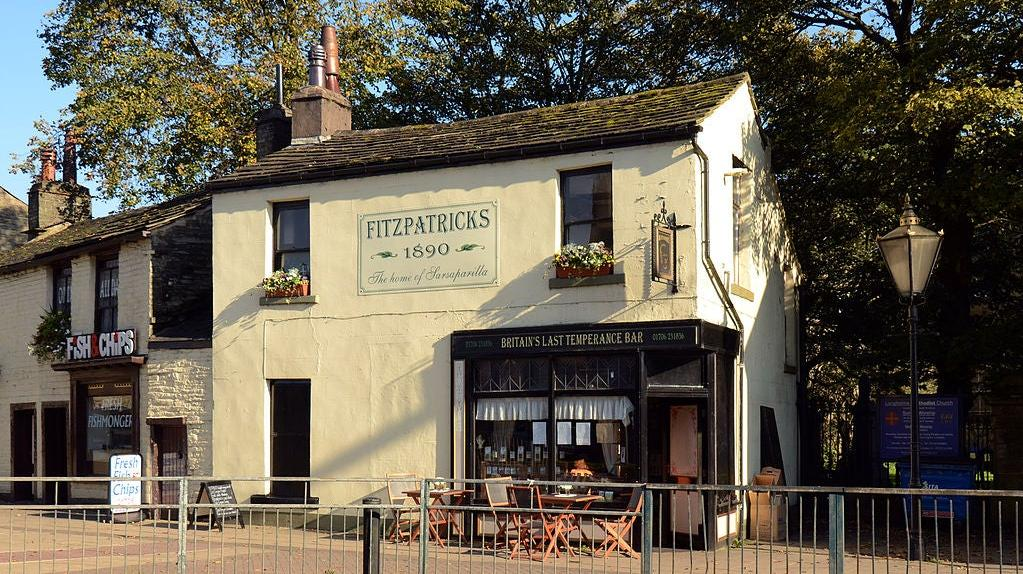The Oldest Booze-Free Bar In Britain Proves That Sobriety Has Never Gone Out Of Style
Though I knew that I'd face obstacles when I chose to get sober many years ago, I had not accounted for how lonely life would become. When you're able to drink alcohol, it's easy to find a place where everybody knows your name. You can meet up with friends for a drink and make easily make new ones over a pint or two. When you can't and want to avoid temptation, you have to pass up all the social invitations that involve bars, and since the advent of smartphones and complimentary WiFi, it's not easy to strike up a conversation with a stranger at a coffee shop.
I've long wished that there were bars for sober people where we could commiserate over spectacular non-alcoholic drinks, and now that sobriety is finally getting trendy (I ain't complaining about it!), a number of booze-free bars are starting to pop up around the country. What I didn't know until I read this recent piece on Atlas Obscura is that in all the years I was praying for one, a sober bar did exist—and has been slinging quality non-alcoholic drinks since 1890. Unfortunately for me, Mr. Fitzpatrick's Temperance Bar is located in Rawtenstall, England, which is a cool 3,328 miles away from where I grew up. Perhaps this modern crop of sober bars can take a cue from old Mr. Fitzpatrick's, because if a bar with no booze has managed to stay open for 122 years, they've gotta be doing something right.
When Mr. Fitzpatrick's was founded, alcohol-free pubs were not an unusual sight—in fact, the Rawtenstall location was part of a chain of 40 "temperance bars" northwest England. Britain's temperance movement began in the 1830s, when social reformers began pointing out that many of society's ills were related to the consumption of alcohol. Atlas Obscura's piece explores this movement in amazing depth, and points out that Britons may have been aware they had a national drinking problem for at least a century before they organized against it. (It is estimated that in 1730, the average Londoner was drinking over ten gallons of gin per year, and the accompanying poverty, violence, and death were blamed on the Dutch, who produced it.)
By the late 19th century, alcohol-free hotels, pubs, and community gathering spaces could be found all throughout the country and remained popular until after World War II, when society embraced consumerism and sobriety became unfashionable. Gradually every temperance business in Great Britain shuttered, until there was but a single Mr. Fitzpatrick's outpost open, barely clinging to life, but keeping its doors open thanks to a passionate clientele of older teetotalers. In recent years the current owner began making efforts to appeal to children and families, which has breathed new life into the old pub.
So what does a bar serve when booze is verboten? The backbone of Mr. Fitzpatrick's menu is 16 traditional botanical cordials, which are made from a wide variety of herbs, spices, fruits, and other aromatics. (As I've written about recently, botanical beverages can be extremely thoughtful and complicated, and don't need a single molecule of alcohol to be utterly extraordinary.) The pub's current owner has expanded the menu to include some more modern libations, using now-popular ingredients like rhubarb. For the kids, there are milkshakes and sodas, and for the old timers, there's still house-brewed sarsaparilla and Mr Fitzpatrick's famous "blood tonic," made from raspberry, nettle, and rosehips. Perhaps most vital to the pub's resurgence is the fact it's become a community gathering space where all are welcome, which is exactly what the temperance bars of old were built to be. The Atlas Obscura piece is well worth a read to learn more about Fitzpatrick's and the British temperance movement in general.
